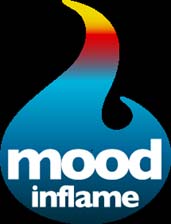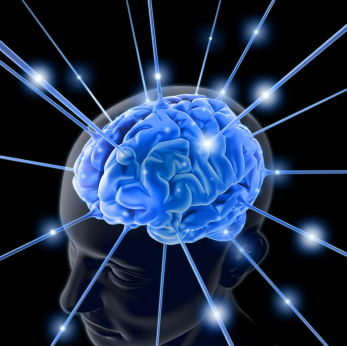Publishable summary



Publishable summary
3.1 Publishable summary
Concept
The concept of the project is that (at least part of) bipolar disorder, major depressive disorder and
postpartum psychoses (collectively called the major mood disorders, MMD) are the result of a
systemic abnormality, namely a proneness to inflammation. In our view these disorders are thus
largely caused by a sort of mild "chronic inflammation" of certain brain areas important for
mood regulation, such as the limbic system.
Objectives
1. The development of blood tests and brain scans to determine the
proneness to inflammation in psychiatric patients and its
consequence for brain function.
2. The exploration of animal models with a depressive-like
behavior and/or a proneness to inflammation to study the
consequences and underlying mechanisms of such a "chronic
inflammation" of the brain.
3. The exploration of in vitro monocyte/macrophage and microglia-
astrocyte-neuron systems to study the basic mechanisms under-
lying the discovered immune activations in psychiatric patients.
4. To study therapeutic correction possibilities using anti-inflammatory medicines, such as
Cimicoxib and Celicoxib (both Cox-2 inhibitors)and to study the anti-inflammatory actions of
regular psychiatric medications.
Achievements (up till 2011)
The consortium (19 partners) has presently in store frozen leukocytes and serum of 676 major
depressed patients (and 587 matched controls), 364 bipolar patients (and 202 matched controls),
106 post partum psychosis patients (and 49 matched controls), 108 offspring of a bipolar parent
(4th collection and 52 matched controls), 30 bipolar twin pairs (and 20 control pairs) and 30 IFN-
treated patients. The internet database has been constructed and clinical data of over 350 of these
patients have been up loaded. We will continue collecting patients and will speed up uploading
of the clinical data in 2012.
Objective 1. The development of blood tests and brain scans to determine the proneness to
inflammation in psychiatric patients and its consequence for brain function.
High through put systems (TLDA gene arrays, FACS and multiplex cytokine arrays) to
determine the inflammatory state of patients have been further developed: At present our gene
TLDarray exist of around 70 genes selected on the basis of whole genome analyses of various
patient groups.
Data show an activated set point (a characteristic fingerprint of both pro- and anti-inflammatory
genes) of monocytes and a T cell activation set point (of both anti- and pro-inflammatory forces)
in individuals at risk to develop a major mood disorder and patients with an active and/or
minimally treated major mood disorder.
There is a variable rise in pro-inflammatory cytokines in serum, particularly of IL-1β, IL-6,
PTX3, TNF-α, CCL2 and sCD25 not only depending on disease phenomena, but also on gender,
age, body mass index and serum lipid spectrum.
Patients with bipolar disorder are characterized by monocyte activation (half the cases and
predominantly cases with minimal drug treatment and active disease), increases in circulating
Tregulator cells (when younger than 40 years of age) and higher levels of serum IL-1β, PTX3
and sCD25
Patients with bipolar disorder have a higher prevalence of autoimmune thyroid disease, these cases are characterized by a reduced activation set point of monocytes and a reduced number of circulating Tregulator cells Children of a bipolar patient are characterized by monocyte activation (changing over time in pattern when growing from puberty to adolescence), increases in circulating Tregulator cells and decreses in TH1 and TH17 cells, and higher levels of serum PTX3, CCL2 and sCD25. Children of a bipolar parent also have a higher prevalence of autoimmune thyroid disease, irrespective of the presence of a mood disorder. These children are again characterized by a reduced activation set point of monocytes and a reduced number of circulating Tregulator cells Patients with a severe major depressive disorder are characterized by a monocyte activation (similar to bipolar disorder) and higher level of the serum cyokines CCL2, IL-1β, IL-6 and IL-8 (thus more than bipolar disorder), but normal levels of circulating Tregulator cells, TH1 and TH17 cells. Treatment with venlafaxine resulted in a response rate of 52%, response could be predicted via the monocyte activation state prior to therapy: A paradigm was developed using 16 classifyer monocyte genes predicting response rate with a apecificity and sensitity between 70-80%. Venlafaxine treatment reduced monocyte activation. Treatment with imipramine resulted in a response rate of 28%, response could be predicted via the T cell state: A low number of CD8+ T cell predicted response, while imipramine treatment up regulated T regulator cells. Women with a post partum psychosis are characterized by a strong monocyte activation (in part induced by the post partum state) and a higher level of serum CCL2, but decreases in circulating Tregulator cells, TH1 and TH17 cells. MiRNA expression studies in the monocytes of this group of patients has started and delivers a set of 8 miRNA's for further studies to complete the signature. These miRNA's can in principle also be detected in serum and might thus complete or even replace the monocyte studies. As part of the monocyte activation fingerprint a reduced ratio of the α/β glucocorticoid receptor gene expression was found above described patient groups. Patients with a negative dexamethason suppression test (thus resistant to steroids) had a reduced monocyte α/β glucocorticoid receptor gene expression (preliminary data) Since the reduced ratio might thus explain the well-known steroid resistance of mood disorder patients and since the reduced ratio correlated to a higher expression of signature genes as well as to an increased level of TH1 cells in the patients, we have developed a functional dexamethason suppression in vitro assay using leukocytes of patients and measuring the cytokine interaction of monocytes and TH1 cells. MRS and BOLD fMRI studies on major depressed studies have been completed and samples and data await analysis. A PET scan for activated microglia using the microglial activation marker the peripheral benzodiazepine receptor (PBR) is tested out in bipolar patients. The PBR is also part of the monocyte activation gene fingerprint and monocyte in vitro studies have revealed that activation of the PBR has anti-inflammatory properties as well as induction properties for the monocytes to develop into dendritic cells. HPLC techniques to determine tryptophan catabolic pathway metabolites in patient blood are now fully validated and patient evaluation has begun in 2011. Antibodies to kynurenin break down products have been developed and an antibody to quinolate has been used in a morphological brain study of depressed suicide victims showing positivity of microglia in frontal brain areas. Objective 2. The exploration of animal models with a depressive-like behavior and/or a proneness to inflammation to study the mechanisms and consequences of such a "chronic inflammation" of the brain.
An LPS-induced prenatal inflammation mouse model has further deepened our understanding how peripheral pro-inflammatory activation of peripheral monocytes/macrophages by a microbial component, i.e. LPS, gives rise to an immune activation of microglia (the monocyte/macrophage of the brain) in the limbic system during development leading to an abnormal hippocampus development/abnormal neuronal function, with later abnormal depressive-like behaviour. The achievement of this year were that
1. It appeared in whole genome analysis of the microglia that in the process many immune
genes (both pro- and anti-inflammatory) were turned on, while many genes for axon guidance were turned of. This points in the direction that immune activated microglia neglects axonal growth/sprouting, explaining the abnormal hippocampus development
2. Activated microglia influences synaptic signaling in neurons via astrocytes using
purinergic signaling.
The NOD mouse model has also brought new exciting insights. This established model for autoimmune thyroiditis and autoimmune diabetes (developing after 12 weeks of age) has mild behavioral abnormalities before 10 weeks of age (hyperactivity), which can be severley aggrevated to a depressive-like behavior by LPS injections. While the normal NOD mouse has a mild pro-inflammatory state of monocytes and microglia, LPS treatment induces a strong interferon-related inflammatory signature in its microglia. This points in the direction that a predisposition to autoimmunity (and a priming of microglia) can lead to strong inflammatory activation of microglia after a systemic microbial trigger and a severe depression-like syndrome. The OBX rat model (a model of local inflammation of the brain) and the rat colitis models (gut inflammatory models of systemic chronic inflammation) were also further developed. MRI found a reduced blood flow in the hippocampus of the OBX rat, while both systemic and brain signs of inflammation were found in the colitis models (raised iNOS expression and expresion of inflammatory cytokines). In the colitis models also a higher TDO activity in the liver was detected explainig the reduced trytophan levels in the animals. The chronic restraint stress animal models (both in normal and gestational rats) are yielding data supporting the concept that these models are reliable modelsof depression and particularly impact the expression of TDO in the liver (thus affecting the tryptophan break down pathways) and do not particularly impact the inflammatory state of the animals. Objective 3. The exploration of in vitro monocyte/macrophage and microglia-astrocyte-neuron systems to study the basic mechanisms underlying the discovered immune activations in psychiatric patients. In vitro monocyte culture systems further established that bacterial products (LPS), hormones like HCG and the neurotransmitters adrenalin and Ouabain elicit part of the gene expression signature in the cells. Ouabaine induces the most complete signature, also involving the socalled cluster 2 genes (the adhesion/motility/chemotaxis genes). At present partners use in particular the MM6 monocytic celline.
1. Hormones like prolactin and oxytocin are presently tested (since the post partum period
elicits the monocyte activation). In these model systems the dampening effect of venlafaxine and imipramine will be tested.
2. Over expression of PDE4B and ATF3 in the cells leads to minmal changes, indicating the
minor importance of the genes under staedy state conditions. EGR3 over expression is presently studied.
3. An important series of experiments starts to elucidate the epigenetic regulation of the
immune activation signature. Ouabaine-induced-signature genes show strong overlap with a particular profile induced with a particular polycomb protein (a protein that epigenetically regulates gene transcription via chromatin remodelling). This polycomb protein (as well as particularly linked miRNA's) is indeed induced by Ouabaine and
present experiments suggest an involvement in the expression of the monocyte signature. Experiments are ongoing to unravel this type of inflammatory epigenetic regulation.
4. Triggering of the PBR on monocytes leads to reduced production of pro-inflammatory
cytokines and stimulates the monocytes to develop into dendritic cells.
The culture systems of microglia-astrocyte-neuron interactions yielded the following results:
1. Mouse microglia activated by LPS induces neurite outgrowth in co-cultured neurons
supporting the gene array data that immune activated microglia indeed neglects neuronal sprouting.
2. A microglial celline BV-2 stimulated by various immune stimuli (a.o. LPS, IFN-γ)
expresses the signature transcription factors ATF3, EGR3 and PU.1
3. The microglial celline BV-2 stimulated by IFN-γ expresses IDO and induces neurotoxic
effects via the kynurenine pathway.
4. IFN-γ stimulation induced in dorsal-raphe-slice-cultures IDO up regulation (but not in
microglia) and serotonergic cell death, again suggesting neurotoxic effects via the kynurenine pathway
5. The important role of purinergic signalling in these interaction effects between activated
microglia-astrocye-neurons is elucidated
a. In both astrocytes and microglia the regulation of IL-6 and CCL2 release is most
likely mediated by P2X7 receptors.
b. Activation of microglial P2X7 purine receptors is implicated in the
neuroprotection upon NMDA-induced neurotoxicity.
Objective 4. To study therapeutic correction possibilities using anti-inflammatory medicines, such as Cimicoxib and Celicoxib (both Cox-2 inhibitors)and to study the anti-inflammatory actions of regular psychiatric medications. With regard to therapeutic studies aiming at correcting the pro-inflammatory state:
a) COX-2 inhibition has hardly effects on the behavior of the non-LPS stimated NOD
mouse (should be tested in the LPS stimulated NOD mouse).
b) Imipramine treatment of the OBX rat attenuates local brain inflammation and improves
c) Imipramine treatment is robust in the treatment of the GS rat model (unlike sertraline) d) A trial with Cimicoxib has been finalized in patients (SECIM trial). Data show (near
significant) beneficial effects in patients with a severe MDD. Sera are tested for markers discriminating responders from non-responders and preliminary data show such markers to be classical cytokines.
e) The CIMICOXIB trial with Celecoxib is delayed but started in Germany (inclusion 10
patients). The IRBs of the other non-German centres are critical, but about to give their approval in the coming months.
Overall Conclusion
The concept of the project has been strengthened and refined this year: An abnormal immune
activation set point of microglia in the brain (hippocampus) is emerging as central to mood
disorders. This abnormal immune activation set point impacts neuronal sprouting, axon
guidance, synaptic function and toxicity via neglect of growth factors and/or production of toxic
kynurenine products and/or via purinergic signalling (the latter often via astrocytes). This
immune activation can be induced by a systemic trigger (e.g. infection,
hormones/neurotransmitters) and can then be detected in abnormal activation set points of
circulating monocytes, T cells and cytokines. These systemic abnormalities are evident in large
proportions of mood disorder patients and assays to detect these are in a far stage of
development.
Expected final results and their potential impact and use.
We are confident that we will develop 1) clinically applicable test systems to detect the
immune activation state of microglia and peripheral immune cells and their consequences,
e.g. abnormal tryptophan break down products, in patients and individuals at risk for MDD
and 2) drugs that counteract this immune activation state. The subsequent exploitation of
these tests and drugs will have a significant impact upon the general health status of the EU
population and an extraordinarily positive effect on health costs in Europe.
Contact deta
Source: http://www.moodinflame.eu/files/Publishable_summary_3rd_year_2011.pdf
Tr.0405.042-053
tr.0405.042-053 23.03.2005 14:07 Uhr ©Seite 42 42 GENTESTS TECHNOLOGY REVIEW April 2005 © Copyright by Heise Zeitschriften Verlag GmbH & Co. KG. Veröffentlichung und Vervielfältigung nur mit Genehmigung des Heise Zeitschriften Verlags. tr.0405.042-053 23.03.2005 14:07 Uhr ©Seite 43 GENTESTS 43 Das Geschäft mit den GenenNicht nur Wissenschaftler interessieren sich für das Erbgut.Arbeitgeber, Versicherer, Ärzte, Patienten und werdende Elternwollen wissen, wie das genetische Schicksal beschaffen ist.Ein gewaltiger Markt für dubiose Geschäftemacher
findedeinemitte.at2
Die wahren Ursachen chronischer Krankheiten – Teil 1 Es gibt auf dem Gebiet der orthomolekularen Medizin gottlob immer wieder neue Erkenntnisse. Wir hatten Ihnen in den letzten Wochen insbesondere zu Vitamin D eine Fülle dieser neuen Forschungsergebnisse bekannt gemacht. Im Moment arbeiten meine Frau und ich an der Zusammenstellung von Informationen zu Vitamin C. Sie werden demnächst mehr darüber lesen. Heute möchte ich Sie auf ein neues Thema hinweisen: Nitrosativer Stress. Hier gibt es – und sogar überraschenderweise aus Deutschland – neue bahnbrechende Ergebnisse.